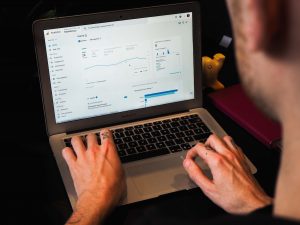Ensuring that your website is accessible to people with disabilities is essential in today’s digital age. Understanding the basics of web accessibility and ensuring that your site meets established accessibility standards can make a big difference for users, improving their overall experience and helping to increase conversions
What is web accessibility?
Web accessibility, often abbreviated as WAI, refers to making a website easier to use for people with disabilities. This includes people with visual impairments who rely on assistive technologies such as screen readers and those with hearing impairments who may not be able to enjoy certain audio-only content. It also covers users with learning disabilities and physical disabilities that affect their ability to interact with websites using a mouse or keyboard. By adhering to established web accessibility standards, you can ensure everyone can have an equal experience when visiting your website.
Web accessibility concerns not just visual elements, but the underlying code of your website as well. Well-written, semantically correct HTML is key to making your site more accessible. This includes improving page readability by creating good contrast between text and background colors, adding clear labels to forms and inputs, proper headings in HTML documents, and adding text alternatives to images so they can be properly interpreted by assistive technologies.

Who benefits from an accessible website?
Not only does making a website more accessible benefit people with disabilities, but it can also work to your advantage as a business. An accessible site means improved customer service and better user experiences overall. It is estimated that 15% of the world’s population have some sort of disability and thus could benefit from web accessibility. This means that even if your website doesn’t cater specifically to disabled users, making it accessible will still give you access to a larger potential audience. Accessibility also has SEO benefits, since websites with good usability and accessibility tend to rank higher in search engine results pages (SERPs).
Beyond the direct benefits to disabled users, there are other reasons to consider when making a website accessible. Accessible sites also enable users to easily access content from any device. This allows for more consistent experiences across different device types, such as different web browsers, tablets and mobile phones. Furthermore, an accessible site is often easier for other developers to work with and build upon since its structure already meets the guidelines and requirements outlined in Web Content Accessibility Guidelines (WCAG). Additionally, making your website increasingly accessible can directly result in positive social media marketing campaigns and will show that your brand or company leads by example when it comes to digital inclusivity.
What are the legal requirements for accessibility?
Web accessibility is largely driven by legal mandates like the Americans with Disabilities Act (ADA) and Section 508 of the Rehabilitation Act. The ADA requires businesses to ensure their products, services, and websites are reasonably accessible to people with disabilities. They must also make sure that no disabled individuals are discriminated against in using their site or services. Organizations failing to meet the legal requirements for website accessibility can face a range of punitive actions from warnings and fines to court orders requiring them to make significant changes in a limited timeframe.
Specifically, Section 508 of the Rehabilitation Act is a law that has been established to ensure that all individuals have equal access to digital technology. When applied to websites, it requires organizations to build sites with accessibility features like text-to-speech capabilities, the ability to navigate with a keyboard instead of a mouse, alternative text for images, adjustable font sizes, and multiple forms of feedback. Additionally, The World Wide Web Consortium (W3C) legislation requires web developers and authors to include certain code in their webpages that makes them more accessible to users with disabilities.
How do I make my website more accessible?
Making your website more accessible is a process that requires time, effort, and expertise. You need to identify any barriers to access, such as low contrast between text and background colors and lack of alternative text for images, and then modify or remove them. Additionally, you need to ensure that all navigational elements can be used with a keyboard instead of a mouse. Furthermore, developing an accessibility statement can help visitors better understand why web accessibility is important to you and how you’re striving to meet their needs.
The best way to ensure you’re making your website more accessible is to use web accessibility guidelines and standards, such as those published by the World Wide Web Consortium (W3C). Additionally, consider using an automated tool like WAVE or ARC by TPGi, which can help you easily identify any potential access issues in your existing site and make suitable changes. Finally, always check with other people to make sure that visitors with different abilities can use your website—you may be surprised at what could be improved upon!
How can I test my website for accessibility compliance?
When testing your site for accessibility compliance, you should identify any issues that could be barriers to users with disabilities. This includes elements such as text size, contrast between text and background colors, and navigational elements that are not useable by keyboard only. There are also online tools available to help test the accessibility of your webpages, such as WAVE, ARC by TPGi and the A11Y Project. Additionally, there are guidelines to refer to that outline specifics of different types of disabilities and how they can access websites differently. A very helpful browser extension is the ARC toolkit. You can install the browser extension and scan individual pages for accessibility on demand. If you’re looking for ongoing monitoring TPGi offers a monthly subscription that can monitor all pages of your website accessibility.
Web accessibility testing is an important part of website development, as it ensures that all users, regardless of their abilities, can access the content on your website. By public testing your pages using online tools and guidelines, you will be able to identify any potential issues and make sure that your site meets the requirements for an inclusive design. Additionally, engaging people with disabilities in user testing is a great way to improve the usability of your website for all users.




